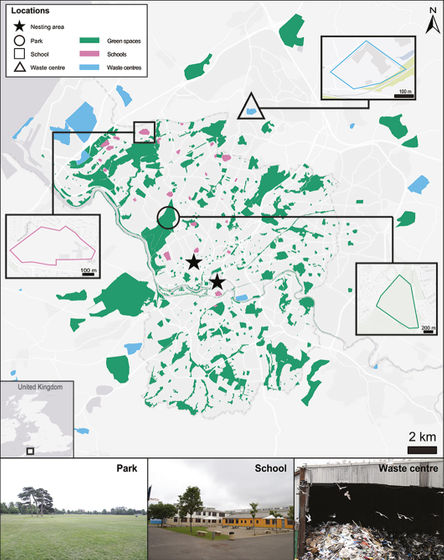Seagulls prove to come to steal food for 'school lunch break'

Many of the people who liked the school lunch, the bread sold at the purchasing department, and the lunch boxes made by their parents would have lived a student life looking forward to lunch every day. Experiments tracking seagulls, often known
Urban gulls adapt foraging schedule to human-activity patterns --Spelt --2021 --Ibis --Wiley Online Library
https://onlinelibrary.wiley.com/doi/10.1111/ibi.12892
November: urban gulls foraging behavior | News and features | University of Bristol
https://www.bristol.ac.uk/news/2020/november/urban-gulls-foraging-behaviour.html
Gulls Work Out The Timing of School Lunch Breaks So They Can Steal Food
https://www.sciencealert.com/gulls-in-the-uk-have-figured-out-when-schools-are-on-lunch-break-so-they-can-steal-food
It is known that seagulls living on the beach have a habit of ' wanting to eat the food that humans have in their hands ', and the vividness of the method of quickly grabbing food from human hands is 'How can I make a seagull?' Is it possible to prevent food from being stolen? ”Is selected as a serious research theme.
Scientists Discover How to Prevent Seagulls from Stealing Food-GIGAZINE

by Benny Mazur
A research team led by Anouk Spelt, an ornithologist at the University of Bristol, found 12 seagulls in Bristol, one of the UK's leading port cities, to investigate the effects of urban environment and human activity on seagull foraging behavior. We conducted an experiment to install a small GPS. The experiment was conducted between June 18, 2018 and July 16, 2018, which is the breeding season for seagulls.
In parallel with GPS tracking, the research team went to places in Bristol where seagulls were often witnessed and counted the number of seagulls every 15 minutes. The following is a map of the city of Bristol where the experiment was conducted, and the '★' mark indicates the nesting site of seagulls. In addition, the places marked with '□', '○', and '△' represent 'schools,' 'parks,' and 'garbage collection facilities' that have counted the number of seagulls.

A team of researchers analyzed GPS and measurement data and found that the number of seagulls infested at school was highest at 11:15 and 12:45. This result is also consistent with the break time schedules of '11: 00-11: 20' and '12: 20-13: 00' when school students go out to the playground to eat lunch and snacks.
'When we visit the school, the students are excited to say,'When it's time to spread your lunch, seagulls come to school,'' Spelled said. However, it has been confirmed that many seagulls are flying to school during the first break to eat snacks and during the lunch break to have lunch. '
The survey also found that many seagulls are also found in 'early morning parks' and 'weekday daytime garbage collection facilities' where garbage trucks frequently come and go. According to Spelt, the reason why there are many seagulls in the park in the early morning is that the earthworms and insects that feed on them are active early in the morning.

by Lex McKee
'Our research found that urban seagulls are adjusting their foraging schedules to maximize feeding grounds,' said Shane Windsor, co-author of the paper. Since some seagulls may use all three feeding areas during the day, it is possible that seagulls consider the ease of use of the feeding areas in order to optimize energy intake efficiency. Sex is also suggested. These results highlight the ability of seagulls to adapt flexibly to artificial environments and schedules. '
Related Posts:






